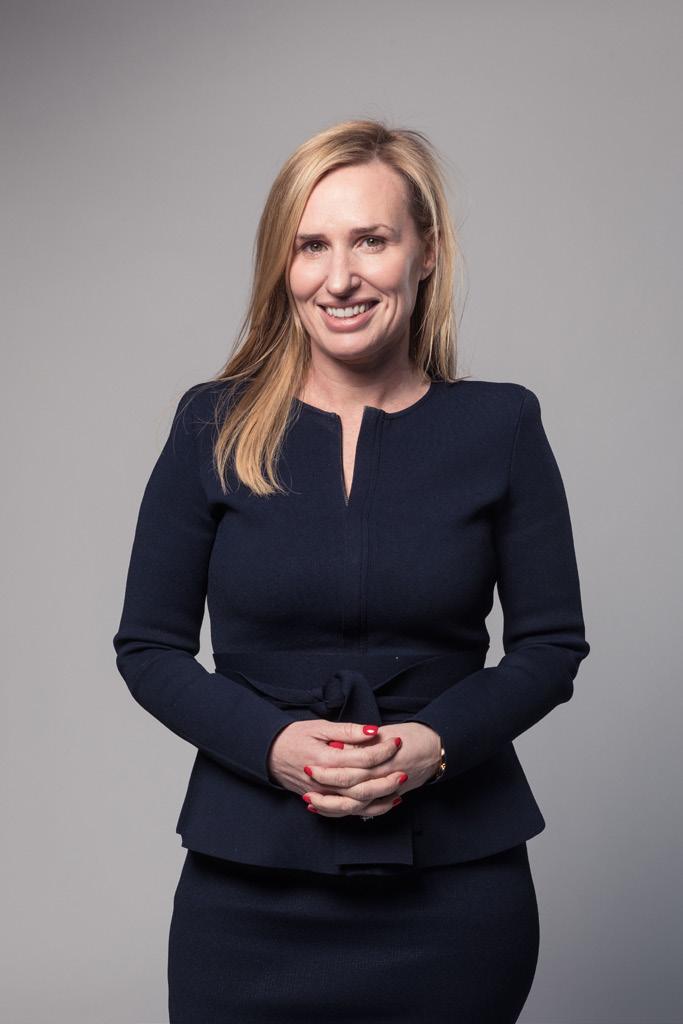
7 minute read
INDUSTRY by Meg Redwin, Multiplex
HOW THE ACA CORRECTED THE GENDER IMBALANCE IN THE BOARDROOM TO DRIVE POSITIVE CHANGE ACROSS THE INDUSTRY
by Meg Redwin
Executive Director - General Counsel, Multiplex Vice President, ACA & NAWIC Awards for Excellence Judge (NSW)
Often on issues like gender there is a lot of discussion and good intentions and real change takes an age to get enacted. In April 2019 I was involved in a change that was bold and effective. The Australian Constructors Association (ACA) is an organisation comprised of the 20 largest contractors across Australia by turnover. The issues which are at the core of the NAWIC membership are also concerns of the ACA. The focus is on building a sustainable industry by improving diversity and the health and well-being of the workforce, improving outcomes on projects and impacts on the built environment. The board of the ACA is made up of the CEOs of the member organisations and not surprisingly in 2019 the board table was occupied by 20 men. Like most organisations in the construction industry it had been debating for years how to get diversity into the industry and deal with the cultural issues that we all know exist. In 2019, an idea was floated to stop discussing the issue and to just make a change to the rules: each member company would have two co-directors, one male and one female, and most importantly the codirectors were to be regarded as equal, empowered to represent the entity as the CEO for the purposes of the ACA and to attend meetings separately on behalf of the company. When John Flecker, CEO of Multiplex, rang to ask me what I thought, I was excited at the idea and the opportunity it presented. It seemed to me that rather than a lot more talking, here was a practical suggestion that might change the dynamic in the room with an organisation that for 20 plus years had been almost entirely male engineers. If the board meetings and running of the ACA could change that dynamic, then that may cascade into the construction companies themselves. Of course there were a few hiccups - why were a number of the appointed female co-directors lawyers? The answer was why were so many of the male codirectors engineers? Why were there not more senior women in operational roles who could function as co-directors? Again, a good question to make an organisation ponder - why don’t you have a senior enough woman who is in that role? Could you have someone? At the first meeting following the decision there were three of us women in the room and I asked Annabel Crookes, Director, Laing O’Rourke and NAWIC member, who was one of those women what she thought:
“I and the other female directors were determined to make a difference and ensure these weren’t tokenistic appointments. Even more importantly, the presence of women on the ACA Board has expanded the perception of opportunities for women - the presence of women on this and other boards, serves as role models to other women in the industry supporting the adage you can’t be what you can’t see.” The initiative snowballed from the three female attendees at that original meeting and currently nearly every member entity has a co-director. In talking to my female colleagues who now sit on the ACA, the opportunities are the ability to be able to voice an opinion that gets shared and discussed at a senior level across a range of construction companies and industry together whilst also learning more about areas that may be outside our day-to-day roles. Things which are often taken for granted like meeting a wider range of industry participants has also been invaluable. Scott Cummins, CEO McConnell Dowell and Vice President of the ACA said to me recently that “There is no doubting that the co-director initiative facilitated the speed of the required change within the association and directly contributed to the ACA’s much needed reform such that it could be significantly more effective in its ability to influence the future of the construction industry.” As one of the original co-directors it has been a great opportunity to be involved in discussions that impact the industry and the people who work in it and to be coming together as an industry to make changes. The ACA is one of the founding members of the Construction Industry Leadership Forum (CILF) with the NSW and Victorian Governments looking at procurement and a fairer allocation of risk profile. In addition the Construction Industry Culture Taskforce (CICT) is working with leading workplace researchers and stakeholders to try and develop a new culture standard. All of the
In 2019, the ACA stopped issues which impact on construction - excessive discussing the issue of board work hours, fatigue, poor mental health diversity and instead made and lack of diversity a change to the rules: each are being targeted and once agreed will need member company would have to get built into the government procurement two co-directors, one male and requirements. This work one female. Most importantly is critical and will only be successful if it reflects the co-directors were to be the actual reality of the industry. A diverse voice regarded as equal, empowered to in the room is essential represent the entity as the CEO for this to have an impact. What Cathal O’Rourke, for the purposes of the ACA and Managing Director, Laing to attend meetings separately on O’Rourke and the current President of the ACA behalf of the company. has noticed is that the appetite for discussion and the breadth of issues discussed has increased and he believes we are now seeing more considered and overall better decisions being taken - ones that have been explored through a greater number of lenses. He also reflected that this different pool of leaders has used their relationships in the market, often to different client and stakeholder team members, which has given new impetus to the board to harness these relationships to drive real change. These additional relationships include organisations like NAWIC. I recently reflected with Pilar Gomez, Human Resources Director of Acciona, about the experiences she thought being a co-director had for her on a personal level. Her view was that it had given her visibility of topics that affect all players in the industry and that helped her understand better the difficulties and the effort that the different contractors have made so far to overcome issues that we all agree affect the industry. At a very practical level she felt that it had given her the ability to develop her contact network both amongst members and other organisations who interact with the ACA. Sometimes it is easy to make the big statement that the diversity in the room brings different views. But having been in the room at the first meeting where it was slightly awkward, I think back on the strategy session we did in person in 2019. At the end of a long day of reflection there was a dinner and Craig Laslett,
the then President, invited people around the table to make a comment, or tell a joke or reflect on the strategy. Out tumbled some heartfelt stories from everyone in the room about what working in the construction industry meant to them, both the good and the bad, and I recall one of my male co-directors saying that in all the years of dinners there hadn’t been such openness and reflection in this forum and that could only be a good thing.
Annabel Crookes

Pilar Gomez


Cathal O’Rourke For an industry which can be seen as slow to embrace change, the co-director initiative has been a great success. The ACA is refreshed and tackling significant issues in the industry through the CILF and the CICT and its various working groups. The female voice in the room is just a voice and non-comment worthy. Annabel Crookes and I sit on the Executive Committee and we are getting ready for a strategy day which hopefully will set a course for not only the ACA to be looking at a range of issues and initiatives, diversity more broadly being one of those, but also for each of the member companies of the ACA to take and embrace those discussions and opportunities that us new directors have grabbed with both hands.









